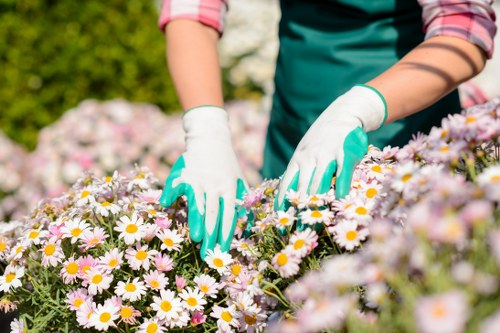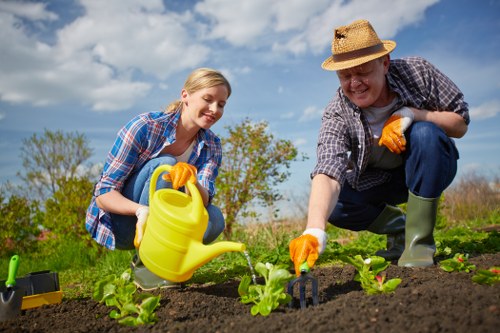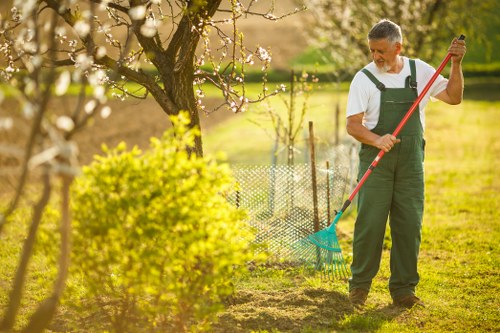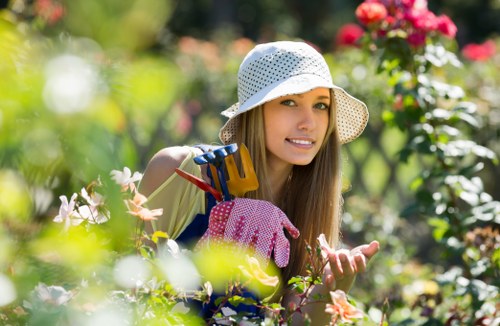Landscape Gardening in Poplar

Introduction to Landscape Gardening
Landscape gardening in Poplar offers a unique blend of natural beauty and urban sophistication. Whether you're a seasoned gardener or a beginner, transforming your outdoor space can significantly enhance the aesthetic and functional value of your property.
Poplar, known for its vibrant community and diverse flora, provides an ideal environment for cultivating stunning landscapes. With the right planning and techniques, you can create a garden that not only complements your home but also serves as a personal sanctuary.
In this comprehensive guide, we'll explore the essential aspects of landscape gardening in Poplar, including plant selection, design principles, maintenance tips, and more.

Choosing the Right Plants
Selecting appropriate plants is crucial for the success of your landscape garden. Poplar's climate and soil conditions should guide your choices to ensure that your plants thrive year-round.
Consider Native Plants: Native plants are well-suited to the local climate and require less maintenance. They also support the local ecosystem by providing habitats for native wildlife.
- Maples
- Dogwoods
- Hostas
- Lavender
Incorporating a mix of trees, shrubs, and perennials can add layers of texture and color to your garden, creating a dynamic and inviting space.

Design Principles for Landscape Gardening
Balance and Symmetry
Achieving balance in your garden design helps create a sense of harmony and order. Symmetrical designs provide a formal and structured appearance, while asymmetrical designs offer a more natural and relaxed feel.
Creating Focal Points
A focal point draws the eye and serves as the centerpiece of your garden. Common focal points include:
- Water features
- Statues
- Unique plant arrangements
Pathways and Flow
Pathways guide visitors through your garden, enhancing the overall flow and accessibility. Curved paths can create a sense of mystery and discovery, while straight paths offer a more direct and formal approach.

Soil Preparation and Maintenance
Healthy soil is the foundation of a thriving garden. Proper soil preparation ensures that your plants have the necessary nutrients and conditions to grow robustly.
Testing Soil pH: Understanding your soil's pH level helps in selecting the right plants and amendments to balance acidity or alkalinity.
- Gather soil samples.
- Use a soil pH testing kit.
- Adjust pH levels as needed with lime or sulfur.
Regular Maintenance: Consistent care, including watering, fertilizing, and pruning, is essential for maintaining the health and beauty of your garden.

Sustainable Gardening Practices
Adopting sustainable practices not only benefits the environment but also ensures the longevity of your garden.
Water Conservation: Implementing rainwater harvesting systems and using drought-resistant plants can significantly reduce water usage.
- Install rain barrels
- Use drip irrigation
- Mulch to retain moisture
Composting: Recycling organic waste into compost enriches the soil and promotes healthy plant growth.
Beneficial Insects: Encouraging the presence of pollinators and natural pest predators helps maintain ecological balance.
Seasonal Considerations
Poplar experiences distinct seasons, each offering unique opportunities and challenges for landscape gardening.
Spring
Spring is ideal for planting new perennials and preparing garden beds for the growing season. It's also a time to assess and repair any winter damage.
Summer
During summer, focus on maintaining your garden through regular watering, weeding, and pest control. It's also a great time to enjoy your outdoor spaces.
Autumn
Autumn is perfect for planting bulbs and preparing your garden for the winter months. Leaf litter can be used as mulch to protect plant roots.
Winter
Winter requires minimal maintenance, but it's essential to protect sensitive plants from frost and snow. This is also a good time to plan for the upcoming gardening season.
Embracing the Seasons: Understanding and adapting to seasonal changes ensures that your landscape garden remains vibrant and healthy throughout the year.
Incorporating Hardscaping Elements
Hardscaping adds structure and functionality to your garden, complementing the natural elements.
Patios and Decks
Creating outdoor living spaces like patios and decks provides areas for relaxation and entertainment. Choose materials that blend seamlessly with your garden's aesthetic.
Fencing and Walls
Fences and walls define your garden boundaries and offer privacy. They can also serve as supports for climbing plants, adding vertical interest.
Garden Structures
Structures such as pergolas, trellises, and gazebos enhance the visual appeal and provide shade and shelter within your garden.
Lighting: Integrating garden lighting extends the usability of your outdoor spaces into the evening hours and highlights key features of your landscape.
Personalizing Your Landscape Garden
Adding personal touches makes your garden uniquely yours. Consider incorporating elements that reflect your style and interests.
- Decorative planters
- Art installations
- Customized garden furniture
Color Schemes: Selecting a cohesive color palette can create a harmonious and visually appealing garden.
Textures and Materials: Mixing different textures and materials adds depth and dimension to your garden design.
Personal Projects: DIY projects like building a birdhouse or creating a mosaic path can enhance the charm of your landscape garden.
Expert Tips for Successful Gardening
Implementing expert advice can greatly improve the success and beauty of your landscape garden.
- Plan Thoroughly: Take the time to design and plan your garden layout before planting.
- Choose Quality Plants: Invest in healthy, high-quality plants from reputable nurseries.
- Invest in Good Soil: Rich, well-draining soil is essential for strong plant growth.
- Monitor for Pests: Regularly check for and address pest issues promptly.
- Stay Consistent: Maintain a regular gardening schedule to keep your landscape thriving.
Continuous Learning: Stay informed about the latest gardening trends and techniques to keep your garden fresh and innovative.
Conclusion
Landscape gardening in Poplar offers endless possibilities for creating beautiful and functional outdoor spaces. By carefully selecting plants, adhering to design principles, maintaining your garden, and embracing sustainable practices, you can cultivate a landscape that enhances your property and provides enjoyment for years to come.
Ready to transform your outdoor space? Contact us today to get started on your landscape gardening journey in Poplar!